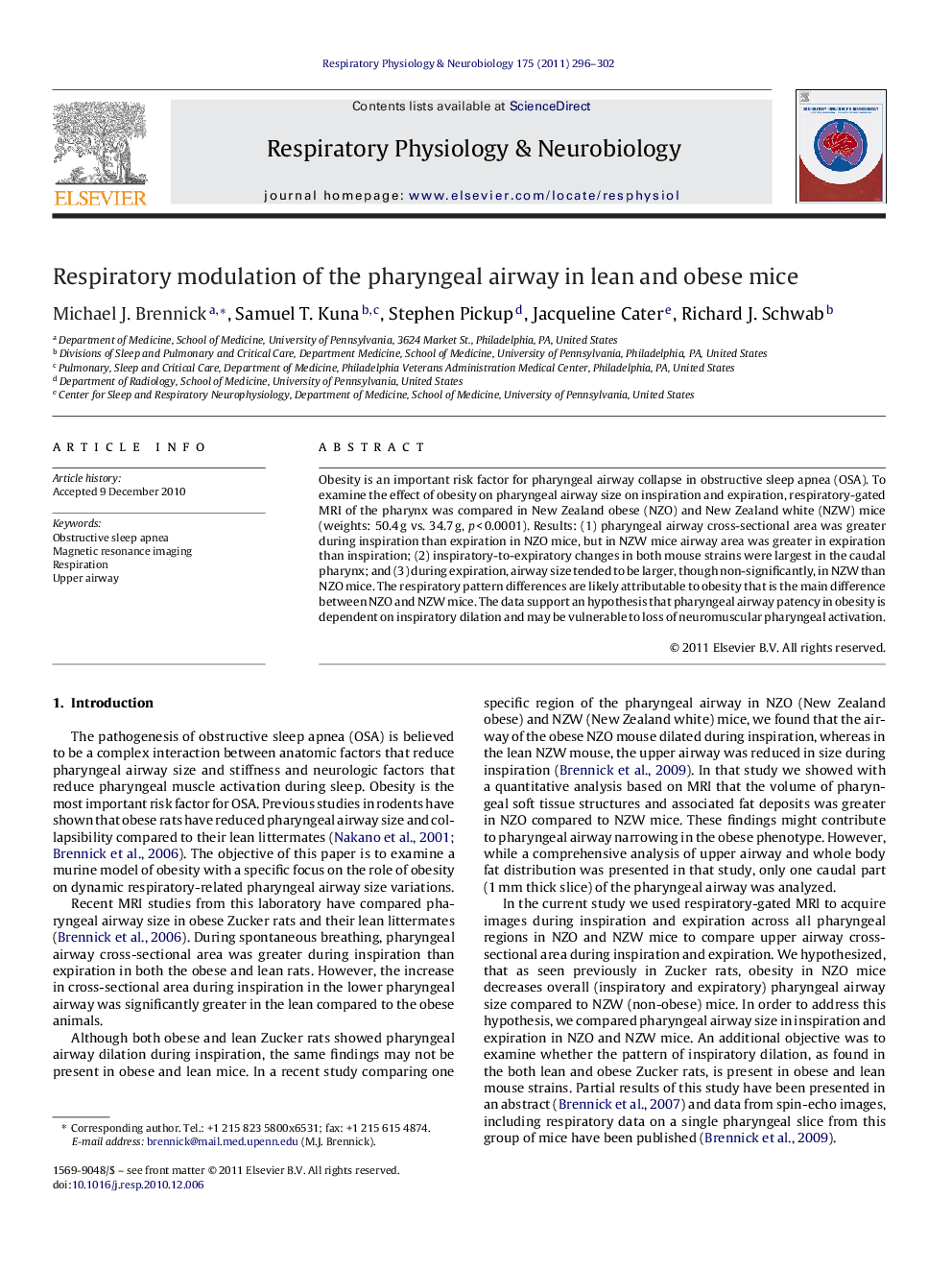| Article ID | Journal | Published Year | Pages | File Type |
|---|---|---|---|---|
| 2847457 | Respiratory Physiology & Neurobiology | 2011 | 7 Pages |
Obesity is an important risk factor for pharyngeal airway collapse in obstructive sleep apnea (OSA). To examine the effect of obesity on pharyngeal airway size on inspiration and expiration, respiratory-gated MRI of the pharynx was compared in New Zealand obese (NZO) and New Zealand white (NZW) mice (weights: 50.4 g vs. 34.7 g, p < 0.0001). Results: (1) pharyngeal airway cross-sectional area was greater during inspiration than expiration in NZO mice, but in NZW mice airway area was greater in expiration than inspiration; (2) inspiratory-to-expiratory changes in both mouse strains were largest in the caudal pharynx; and (3) during expiration, airway size tended to be larger, though non-significantly, in NZW than NZO mice. The respiratory pattern differences are likely attributable to obesity that is the main difference between NZO and NZW mice. The data support an hypothesis that pharyngeal airway patency in obesity is dependent on inspiratory dilation and may be vulnerable to loss of neuromuscular pharyngeal activation.
